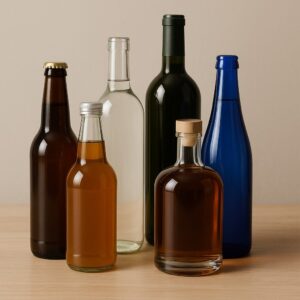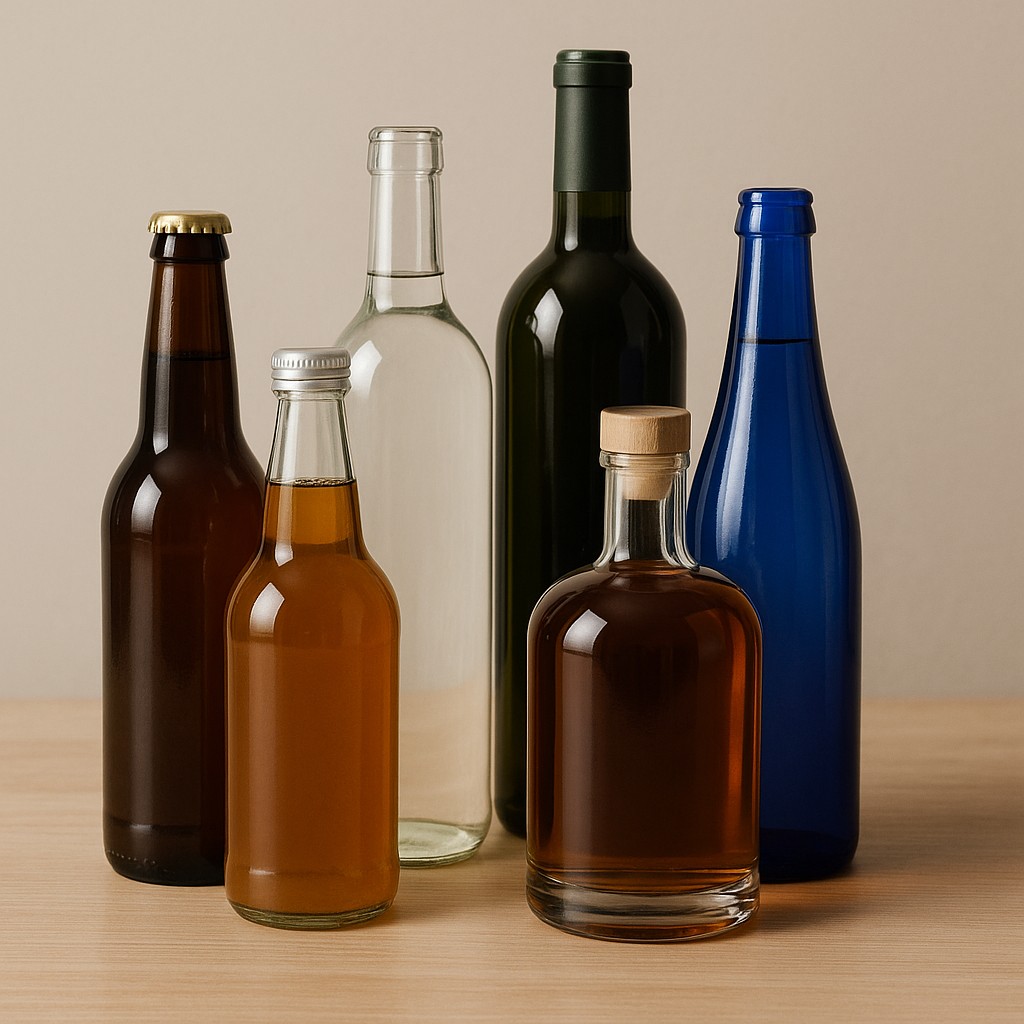
Walk into any upscale grocery store or specialty beverage shop, and you’ll notice something pretty consistent. The products positioned as premium—the craft sodas, the artisan kombuchas, the high-end spirits—they’re almost always in glass. This isn’t coincidence, and it’s not just tradition either. Despite all the advances in packaging technology and the rise of lighter, cheaper alternatives, glass bottles continue to hold their ground in the premium beverage market for reasons that go way beyond nostalgia.
The Weight of Perception
There’s something undeniably substantial about picking up a glass bottle. It has heft. It feels solid in your hand in a way that plastic never will, no matter how thick the walls are. That physical weight translates directly into perceived value in the consumer’s mind, and beverage brands know this. When someone is deciding between two similar products on a shelf, the one in glass automatically feels more serious, more carefully made, more worth the extra few dollars.
This perception isn’t just in people’s heads either—well, it is, but it’s rooted in real factors. Glass has been the container of choice for quality beverages for centuries. Wine, craft beer, premium spirits, fresh-pressed juices—they’ve all built their reputations in glass. That history creates expectations that are hard to shake, and most premium brands don’t want to fight against those expectations. They want to lean into them.
Material Matters for Taste
Here’s where things get technical, but it’s worth understanding. Glass is inert. That means it doesn’t react with whatever you put inside it. No chemical leaching, no flavor transfer, no weird aftertastes that develop over time. When a beverage maker spends months perfecting a recipe, the last thing they want is for the container to mess with those carefully balanced flavors.
Working with experienced glass bottle manufacturers becomes particularly important when flavor integrity is non-negotiable. The right supplier understands how bottle design affects everything from carbonation retention to UV protection, which directly impacts how the product tastes when it finally reaches the customer.
Plastic containers, even the high-quality ones, can introduce subtle changes over time. The beverage can absorb compounds from the plastic, or oxygen can permeate through the walls and oxidize sensitive ingredients. For products where taste is everything—and let’s be honest, that’s pretty much every beverage—glass provides a level of protection that’s hard to match with other materials.
The Sustainability Angle That Actually Matters
Everyone talks about sustainability these days, but glass has a legitimate claim here that resonates with consumers willing to pay more for premium products. Glass bottles are infinitely recyclable without losing quality. You can melt down a glass bottle and make another glass bottle, then do it again, and again, without degradation. That’s not true for plastic, which typically gets downcycled into lower-quality products after one or two rounds.
The problem is that glass is heavy, which means it takes more fuel to transport. This creates a bit of a contradiction that premium brands have to navigate. But many consumers in the premium segment are willing to accept that tradeoff, especially when brands pair glass packaging with other sustainable practices—local sourcing, carbon offsets, or refill programs.
What’s interesting is how this sustainability story plays out in marketing. Premium beverage brands can point to their glass packaging as evidence of their commitment to quality and environmental responsibility simultaneously. It’s a two-for-one message that’s harder to deliver with plastic or aluminum.
Customization and Brand Identity
Glass offers design possibilities that help premium brands stand out in crowded markets. The shape can be distinctive—tall and elegant, short and stout, textured, embossed with patterns. The color can be customized to protect light-sensitive ingredients while reinforcing brand identity. Amber for craft beer, green for certain wines, cobalt blue for premium water—these choices communicate something before the customer even reads the label.
This level of customization does come with higher costs and longer lead times compared to stock packaging options. Most glass manufacturers require minimum order quantities that can be challenging for smaller beverage startups. But for brands that make it past the initial hurdles, that custom bottle becomes a major part of their identity. Think about how many premium spirits are recognizable just from their bottle shape.
The Reusability Factor
Premium consumers often reuse glass bottles in ways they never would with plastic. That empty kombucha bottle becomes a water container, a vase, or storage for homemade cold brew. This extended life creates additional brand impressions long after the original product is consumed. Every time someone sees that bottle in their home or office, they’re reminded of the brand.
Some beverage companies have started building entire business models around this behavior, offering refill programs or deposit systems that bring bottles back for reuse rather than just recycling. This only works because glass can withstand the repeated washing and handling required for true reuse. The durability that makes glass heavier and more expensive to ship also makes it valuable beyond a single use.
When Glass Doesn’t Make Sense
It’s worth noting that glass isn’t the right choice for every beverage or every brand. Sports drinks, value-priced sodas, products meant for outdoor activities or gyms—these often work better in plastic or aluminum. The risk of breakage, the weight for shipping, and the higher material costs can outweigh the premium positioning benefits depending on the target market and distribution channels.
But for brands that are competing on quality rather than convenience, that are trying to command higher prices and attract discerning customers, glass remains the standard. The material telegraphs seriousness and quality in a way that’s difficult to replicate with alternatives, no matter how good the marketing is around those alternatives.
The Bottom Line
Glass bottles aren’t dominating the premium beverage space because manufacturers are stuck in the past. They’re dominant because they deliver real benefits that matter to both brands and consumers. The taste protection, the perceived value, the sustainability story, the design possibilities—these factors combine to make glass the logical choice when premium positioning is the goal.
As beverage markets continue to fragment and new premium products enter the scene, glass packaging will adapt but likely won’t disappear. The material has proven too valuable for too long to too many successful brands. For any beverage maker looking to establish themselves in the premium tier, the question isn’t really whether to use glass. It’s which glass bottle will work best for their specific product and brand vision.
